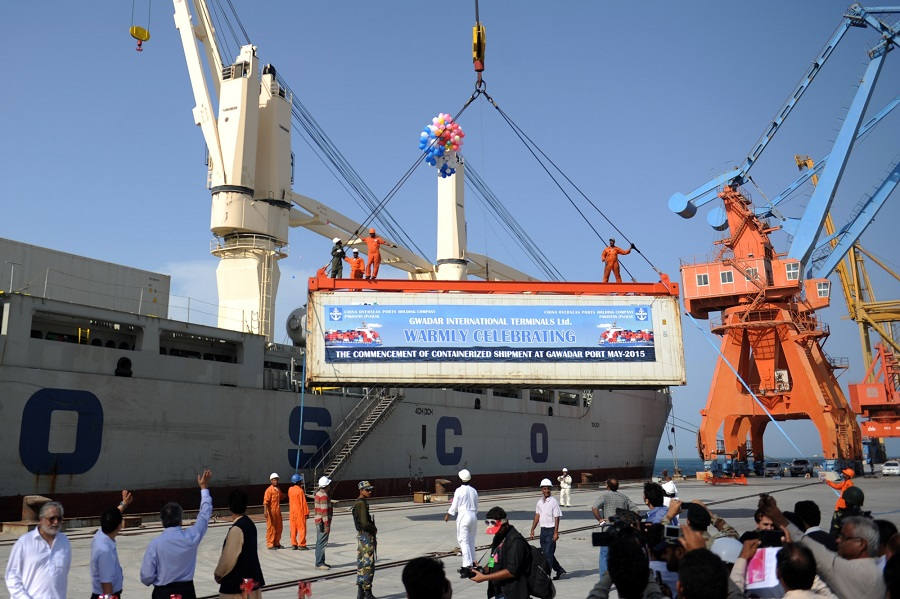The Pakistani port city of Gwadar, being developed by big Chinese investment, is bringing rich profits to Pakistani investors. The port city is witnessing the development of special economic zones, industrial clusters, residential estates, recreational facilities like a golf park, malls and various modes of connectivity.
The hectic development in the port city, once a sleeping fishing village inhabited by the Baloch minority, is coming at a heavy cost to the locals. For the Baloch people, the city is out of bounds as it has been fenced off, they have no stake in its development, do not partake in the galloping land prices and do not get jobs either.
Dr Zainab Akhter, Research Analyst, South Asia Centre, Manohar Parrikar Institute for Defence Studies and Analyses (IDSA) says: "The benefits of development of Gwadar are not trickling down to the local people. The locals were dependent on fishing and waterways – their main source of livelihoods. But the Pakistani establishment will not give jobs to the locals."
Read More: Pakistan settling outsiders in Gwadar to dilute Baloch influence
Check how the Gwadar Master Plan advertises the gigantic $62 billion CPEC investment that China is spearheading in the impoverished region.
"Gwadar Master Plan envisions a wide city and suburban roads, shopping malls, hotels, recreation ventures, world-class education, and health facilities alongside top-class industry and business infrastructure. Moreover, as per the plan, Gwadar will have convenient global access by road, rail, air, and sea as well as cutting-edge Telecommunication Infrastructure connected to the Global Information Super-Highway. In short, Gwadar envisages Gwadar to be a “Global Smart City,” says the Gwadar Master Plan which runs till 2050.
The master plan for the port city, which is to be developed on the lines of a cosmopolitan Dubai and Singapore, has been designed by Chinese firm, China Communications Construction Company. The Minister of Planning, Development & Reform and the Gwadar Development Authority too have contributed to the plan. The idea is to turn Gwadar into a South Asian economic hub "with a GDP per capita of $15,000 – 10 times that of Pakistan’s average."
Land prices in Gwadar have shot up manifold and large Pakistani real estate companies have shifted base to the city from other parts of the country. Pakistani developers plan to build facilities for adventure, water sports and also develop it as a tourist destination. Many have already raked in big monies by buying and selling land.
Ironically, Pakistanis put faith in Gwadar not because of their own government but because Gwadar is a made-in-China product. China has designed it, is investing big in it and is running it as well.
Pakistani newspaper The Express Tribune quoted Zhang Baozhong, chairman of China Overseas Ports Holding Company – the firm that operates Gwadar Port – as saying that 43 Chinese companies will invest in the special economic zone while 200 more firms have registered for it.
As Chinese companies come into Gwadar and pull in Pakistani investment, an alienated Baloch minority gets pushed out. Akhter adds: "The main issue is gentrification – displacement of local people from core areas of Gwadar. They are migrating to the outskirts of Gwadar or Karachi where they live in dismal conditions. Local fishing will be replaced by Chinese fishing companies, so the benefit will either go to China or port revenues that come under the federal government."
As Pakistan attracts investment into Gwadar from non-resident Pakistanis as well as local companies, it has conveniently overlooked the rights of the indigenous people. Italian journalist Francesca Marino, in her book Balochistan: Bruised, Battered and Bloodied, released in 2020 says that the CPEC project did not even compensate the local populace for acquiring their land. Moreover, jobs under the Gwadar projects are going to "imported workers" – the workforce that has been ferried into Balochistan from other provinces, says the book.
The feeling of alienation runs strong among the Baloch, who have been running an Independence movement against Pakistan by launching attacks on Pakistani Army and Chinese projects. Hyrbyair Marri, head of the Free Balochistan Movement (FBM) narrates that feeling of alienation. Marri says: “To my knowledge, Pakistan has plans to fence the entire coastal belt of Balochistan in three phases. First, they want to fence Gwadar city and then they will extend the plan to the entire district of Gwadar. In the third and the last phase, Pakistan intends to build a fence and cut off the entire coastal belt from the rest of Balochistan. Calling Gwadar, the capital of the newly coined word ‘South Balochistan’ is another ploy to divide Balochistan and implement China’s grand plan in the region.”
Marri adds that the Baloch people will not allow Balochistan to be divided like East and West Germany or North and South Korea. He says: “There is no North, South, East or West Balochistan, Balochistan is one land, it is one country. Pakistan, China and Iran have intensified their efforts against the Baloch nation, it is our duty to unite the Baloch nation, once we are united no power in the world can divide us.”
Mumbai-based geopolitical analyst Mark Kinra says: "The Pakistani Establishment has long been trying to exploit resources from Balochistan. From the Sui Gas fields to Saindak Mines, from the Island Ordinance to constructing a fence from stopping the Baloch enter their own land – all this is to benefit either Punjab or other foreign investors."




















